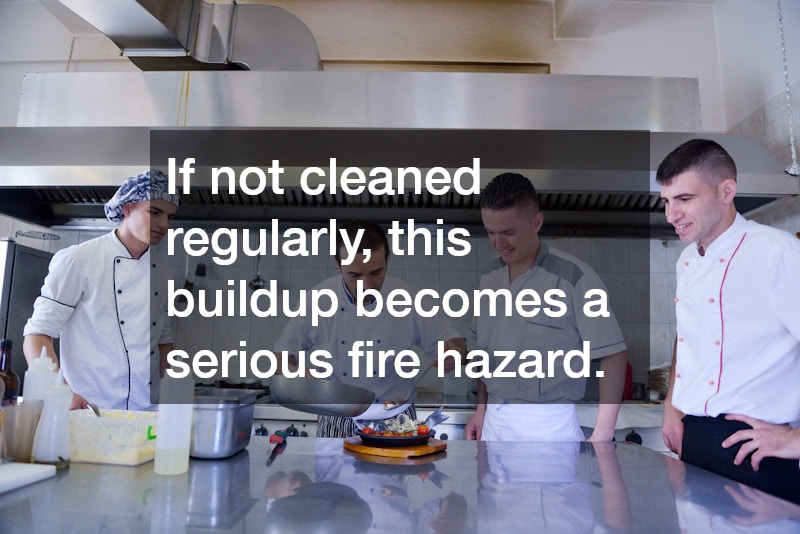When it comes to running a commercial kitchen, cleanliness is more than just a matter of appearance—it’s a matter of safety and compliance. One of the most overlooked yet essential aspects of commercial kitchen maintenance is the cleaning of the exhaust hood system. This is where professional restaurant hood cleaning services come into play. These specialized services are responsible for keeping kitchen exhaust systems free of grease buildup, which reduces fire hazards and ensures compliance with local health and fire codes. But how exactly do they get the job done? Let’s take a closer look at what goes into the process.
The Importance of Hood Cleaning in Restaurants
Before diving into the process, it’s important to understand why this task is critical. During cooking, especially when using grills and fryers, airborne grease particles and smoke are pulled into the ventilation system. Over time, these particles accumulate in the ductwork, hood, and exhaust fan. If not cleaned regularly, this buildup becomes a serious fire hazard. According to the National Fire Protection Association (NFPA), the majority of restaurant fires start in the kitchen, with a significant number originating from the hood and duct systems.
Step-by-Step: How the Cleaning is Done
Professional restaurant hood cleaning services follow a detailed and systematic process to ensure that every component is cleaned thoroughly. Here’s a breakdown of what typically happens during a service call:
1. Initial Inspection
Before starting the job, technicians conduct a comprehensive inspection of the hood system. They check the level of grease buildup, assess the condition of the ductwork and fans, and ensure that all parts are accessible for cleaning. This step is essential for determining the scope of work and identifying any areas that might require repairs or special attention.
2. Equipment Setup and Protection
Technicians then prepare the kitchen for cleaning. This includes shutting off gas lines if necessary and covering nearby equipment, appliances, and food preparation areas with plastic sheeting or tarps to prevent contamination. Floors are also protected with absorbent mats or coverings to manage water and grease runoff during the cleaning process.
3. Degreasing and Scraping
Once everything is prepped, the real cleaning begins. A degreasing solution—specifically formulated to cut through thick layers of grease—is applied to the hood, filters, ductwork, and fan blades. In some cases, technicians will use scrapers to manually remove built-up grease before applying the cleaning chemicals. This manual effort is especially important in areas where grease has hardened over time.
4. High-Pressure Washing
After degreasing, the components are power-washed using hot water at high pressure. This ensures that all loosened grease and chemical residue is flushed out of the system. The hot water not only removes any remaining contaminants but also helps sanitize the surfaces.
5. Filter Cleaning or Replacement
Filters are a crucial part of the hood system, trapping grease before it can enter the ductwork. Depending on their condition, filters are either deep cleaned or replaced entirely. Technicians typically soak them in a special cleaning solution before rinsing and drying them.
6. Fan and Ventilation System Cleaning
The exhaust fan, usually located on the rooftop, is another critical component. Grease buildup in the fan can significantly reduce its efficiency and increase fire risk. Professionals disassemble the fan (when necessary), clean each part thoroughly, and reassemble it before testing the system to ensure everything works properly.
7. Final Inspection and Reporting
After cleaning, the team performs a final inspection to ensure that the job was completed to standard. Some companies provide a cleaning report or logbook with before-and-after photos for recordkeeping and fire marshal inspections. This documentation is often required by insurance providers and local authorities.
Frequency and Compliance
How often a restaurant hood should be cleaned depends on the volume and type of cooking being done. For instance, fast-food restaurants or kitchens that use solid fuels may require monthly cleanings, while low-volume establishments might only need it every six months. Most jurisdictions follow the NFPA 96 standard, which outlines the minimum fire safety requirements for commercial cooking operations, including exhaust system maintenance.
Why Hiring Professionals Matters
While it might be tempting for restaurant owners to try to handle hood cleaning in-house, the reality is that professional restaurant hood cleaning services offer the experience, equipment, and certifications needed to do the job safely and effectively. They not only help maintain a safe working environment but also ensure compliance with health and fire codes, which can prevent costly fines or even closures.
.





